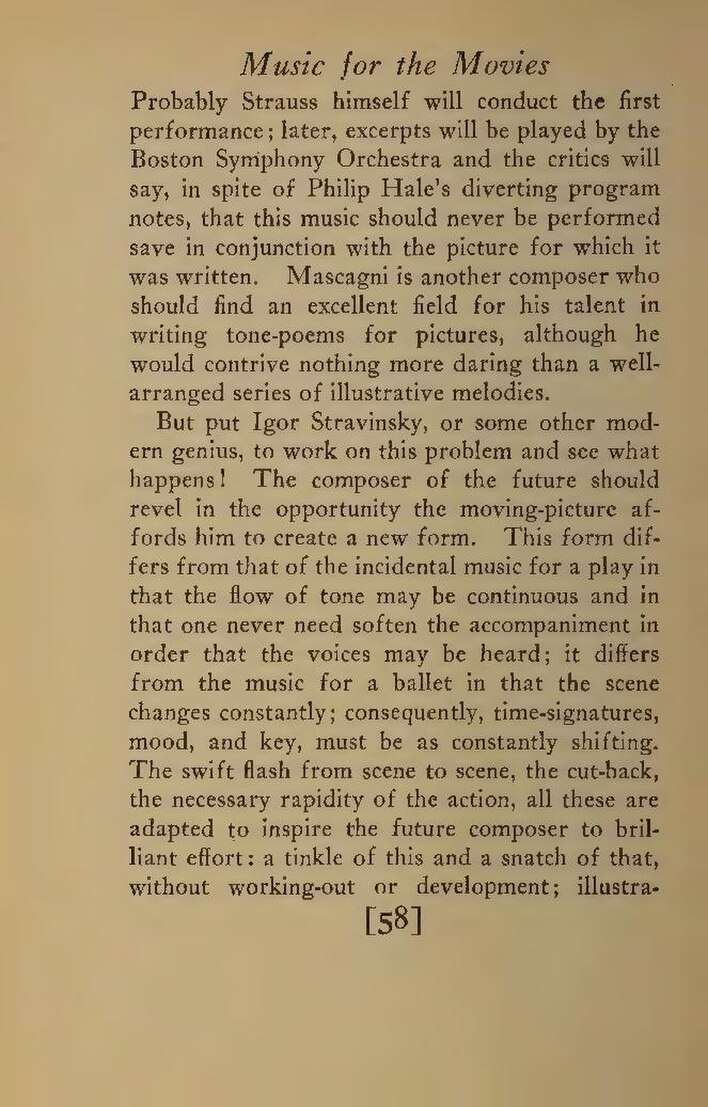Probably Strauss himself will conduct the first performance; later, excerpts will be played by the Boston Symphony Orchestra and the critics will say, in spite of Philip Hale's diverting program notes, that this music should never be performed save in conjunction with the picture for which it was written. Mascagni is another composer who should find an excellent field for his talent in writing tone-poems for pictures, although he would contrive nothing more daring than a well-arranged series of illustrative melodies.
But put Igor Stravinsky, or some other modern genius, to work on this problem and see what happens! The composer of the future should revel in the opportunity the moving-picture affords him to create a new form. This form differs from that of the incidental music for a play in that the flow of tone may be continuous and in that one never need soften the accompaniment in order that the voices may be heard; it differs from the music for a ballet in that the scene changes constantly; consequently, time-signatures, mood, and key, must be as constantly shifting. The swift flash from scene to scene, the cut-back, the necessary rapidity of the action, all these are adapted to inspire the future composer to brilliant effort: a tinkle of this and a snatch of that, without working-out or development; illustra-
